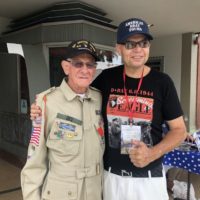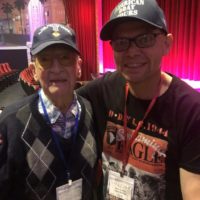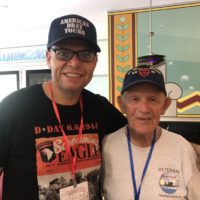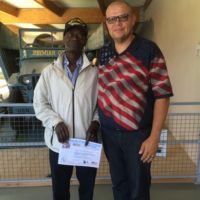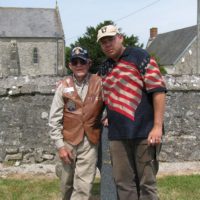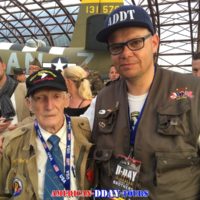WW2 Normandy D-Day landing beaches stories rarely heard
The Taking of Marcouf
In the ungodly predawn hours of June 6, 1944, well before the Germans were fully aware that their Fortress Europe was about to be assaulted, 2 rubber rafts covertly approached the shore of one of the two tracts of land that make up the St. Marcouf Islands off Normandy, France, 4 miles east of the coast of the Cotentin peninsula. The 4 UDT’s (underwater demolition team) manning the rafts, who were attached to the 4th Cavalry Group, were armed with nothing more than their fighting knives and flashlights. Their mission was to eliminate the threat that was believed to be on the island to help clear the way for the main invasion force.
One of the UDT’s was twenty-four year old CPL Harvey Sigurd Olson of Lake Bronson, Minnesota. CPL Olson and the other men navigated their black and musty smelling rafts over choppy waters and large swells until they were about a hundred yards from their objective when they scuttled them with their knives and swam the rest of the way to the shore. The expectation of finding at least a small garrison on the island made their adrenaline pump with each step they took further onto the lightless island.
In England, CPL Olson and his fellow the UDT’s trained extensively for this assault. Time after time they were taken out into the English Channel by Navy boats, deposited in the water and left to swim back to shore. It made sound military sense to assume that the Germans would occupy the Island as a defensive outpost which would give advance warning in the event of an invasion. This is why there was an emphasis put on this mission and the men whose shoulders it fell upon all volunteered for the job.
The sound of the surf crashing onto the beach filled the air as the landing party explored the island. It quickly became clear that St. Marcouf was uninhabited but not without danger. The Germans placed hundreds, if not, thousands of anti-tank and anti-personnel mines throughout the small island. CPL Olson, Troop A, 4th Cavalry, and the other men, PVT Thomas C. Elleran, Troop A, 4th Cavalry, SGT John Zanders. Troop B, 4th Cavalry, and CPL Melvin F. Kenzie, Troop B, 4th Cavalry, signaled the rest of their group, consisting of one-hundred-thirty-two men from the 4th and 24th Squadrons of the 4th Cavalry, and marked the beach with lamps so they could join the 4 UDT’s on shore. The island was fully secured by 0530, a full hour prior to the main seaborne invasion.
Although St. Marcouf was not occupied by the Germans, Corporal Harvey Olson was awarded the Silver Star for his bravery. Harvey Olson’s Silver Star citation reads, The President of the United States takes pleasure in presenting the Silver Star Medal to Harvey Sigurd Olson (37023123), Sergeant, U.S. Army, for gallantry in action against the enemy while serving with Troop A, 4th Reconnaissance Squadron (Mechanized), on 6 June 1944, in France. On that date Sergeant Olson with one companion, displaying the highest courage in the face of unknown dangers, became one of the first American Soldiers of the ground forces to land on French soil. He volunteered for the mission of the landing on D-DAY on the Iles De St Marcouf, a strategically placed island commanding the beach where assault was to be made. Sergeant Olson and his companion paddled through heavy surf and mined waters in a small two-man rubber boat to within 100 yards of the island. Sergeant Olson then destroyed his craft by slashing it open, and swam the remaining distance armed only with a knife. Once on the island, which was heavily covered with anti-tank and anti- personnel mines, Sergeant Olson and his companion signaled the assault forces and marked the beach with lights.
Headquarters, VII Corps, General Orders No. 43 (1944).
Harvey Olson served twenty-two years in the service including during the Korean conflict. He died on September 6, 2002 in Hallock, MN at the age of eighty-one. Currently, the fortifications on St. Marcaouf that were believed to have been occupied by the Germans are falling into ruins. The association “les Amis de l’île du Large Saint-Marcouf” (Friends of Saint-Marcouf), has been preserving the island and is seeking donations to keep the project going. The association’s website is www.ilesaintmarcouf.com however, the site is in French. Thank you to Danielle Duboscq (mother of Trevor Standefer D-Day battlefield guide) for bringing this story to our attention.
Article submitted by :
James Oliveri, WW2 Legacy Keepers


